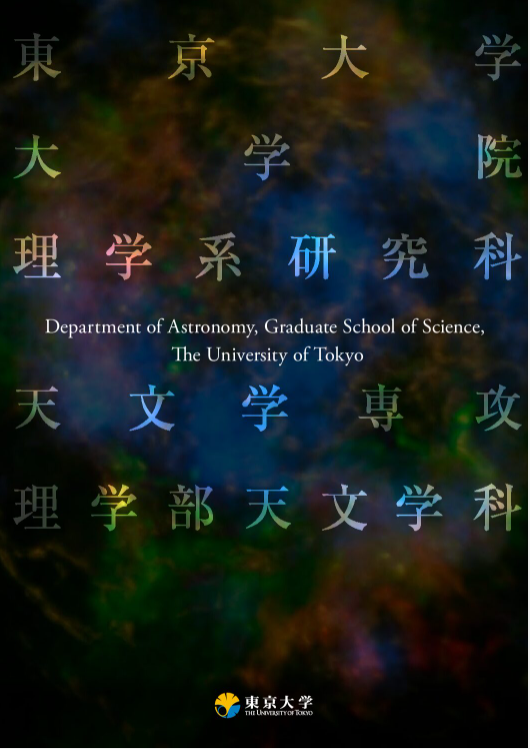Overview
Astronomy is a very old science, but at the same time one of the newest fields of science that have grown rapidly in these decades. New observational techniques have opened many windows, in addition to the conventional one in visible (optical) light, to look into the deep universe over all the frequency range of the electromagnetic waves from radio, infrared, optical, ultraviolet, X-ray, and gamma-ray. Traditional fields of astronomy such as positional astronomy are also evolving rapidly with new techniques including the very long baseline interferometer.
In the Undergraduate Course, students are given the basic knowledge of astronomy and physics together with the basic training of astronomical observations in various wavelength regions as well as that of computers. About 10 students enter the Undergraduate Course every year. The Graduate Course comprises the two-year Master Course and the successive three-year Doctor Course. The Graduate Course provides students with advanced and modern knowledge of astronomy to meet the needs of future researches. They are encouraged to start their own researches under the supervision of a faculty member at the early stage of the Master Course. About 20 and 15 students enter the Master Course and the Doctor Course, respectively, every year.
Full-time faculty members belong to two core institutions of the Department. One is the Department of Astronomy (DoA) located in the Hongo campus and the other is the Institute of Astronomy (IoA) located in the Mitaka campus. IOA operates the Kiso Observatory located at Kiso, Nagano prefecture, where a 105-cm Schmidt telescope and related facililities are maintained. Kiso Observatory is open to staff and students of University of Tokyo as well as to astronomers from other universities and overseas.
In addition to the full-time members, a smaller number of concurrent faculty members from National Astronomical Observatry of Japan (NAOJ) and Institute of Space and Astronautical Science, Japan Aerospace Exploration Agency (ISAS/JAXA) join the graduate course. Further, several faculty members from Department of Physics, Department of Earth science and Astronomy, Graduate School of Arts and Sciences, and Institute for Cosmic Ray Research collaborate with the full-time and concurrent members.
Students in the Graduate Course can carry out their researches using various facilities at DA, IOA, NAOJ, and ISAS and others owing to the large group of faculty members from these institutions which is responsible for the Graduate Course, Department of Astronomy.
Many staffs in various institutes, as listed below, take part in research and education in Department of Astronomy.
- Department of Astronomy, Hongo Campus
- RESCEU (Research Center for the Early Universe), The University of Tokyo
- Institute of Astronomy, The University of Tokyo
- Graduate School of Arts and Science, The University of Tokyo
- National Astronomical Observatory of Japan
- Institute of Space and Astronautical Science, JAXA
Department of Astronomy, Hongo Campus
- Members in Department of Astronomy, Hongo Campus
- Leaflet on Department of Astronomy (Hongo groups) (English version created in 2021 March; click the image below to find the PDF file)






